Introduction
In the ever-evolving digital ecosystem, social media has transcended its role as a mere communication tool to become a critical driver of business strategy. For brands, influencers, and marketers, social stats www.bouncemediagroup.com represent the backbone of informed decision-making. These metrics—ranging from engagement rates to audience demographics—offer a window into consumer behavior, preferences, and trends.
Bounce Media Group, a pioneer in data-driven marketing, has harnessed the power of social stats to craft campaigns that not only resonate with audiences but also deliver measurable ROI. This comprehensive guide explores how businesses can leverage social stats to refine their strategies, optimize content, and stay competitive in an increasingly crowded marketplace. By the end of this article, you’ll understand why mastering social stats is not optional but essential for modern success.
What Are Social Stats? A Comprehensive Breakdown of Metrics
Social stats, or social media statistics, are the quantitative and qualitative data points generated through user interactions on platforms like Facebook, Instagram, LinkedIn, TikTok, and X (formerly Twitter). These metrics fall into several categories:
- Engagement Metrics: Likes, comments, shares, saves, and reactions.
- Reach and Impressions: The number of users who viewed content (impressions) and the unique accounts that saw it (reach).
- Audience Demographics: Age, gender, location, language, and interests of followers.
- Conversion Metrics: Click-through rates (CTR), website traffic, sign-ups, and sales attributed to social campaigns.
- Sentiment Analysis: The emotional tone behind comments, mentions, and reviews (positive, neutral, or negative).
At www.bouncemediagroup.com, social stats are not just numbers—they’re narratives. For example, a high engagement rate on a LinkedIn post might indicate that a B2B audience values thought leadership content, while a spike in TikTok shares could signal viral potential for short-form video. Bounce Media Group’s approach involves layering these metrics to uncover patterns.
By analyzing follower growth alongside engagement trends, they identify which content types drive long-term loyalty versus short-term spikes. Advanced tools like social listening platforms further decode unstructured data (e.g., hashtags, emojis) to reveal emerging trends or pain points within target audiences.
Why Social Stats Are Non-Negotiable for Modern Brands
Ignoring social stats is akin to flying blind in a data-driven world. Consider these compelling reasons to prioritize analytics:
- Audience Insights: Social stats reveal who your audience is and what they care about. For instance, if 70% of a skincare brand’s Instagram followers are women aged 18–34, content can be tailored to address acne prevention or anti-aging—topics relevant to this demographic.
- Campaign Optimization: Real-time data allows brands to pivot quickly. If a Facebook ad campaign for www.bouncemediagroup.com shows a low CTR, A/B testing can tweak visuals, copy, or targeting to improve performance.
- ROI Measurement: Concrete metrics like conversion rates justify marketing spend. A B2C company might track how a 20% increase in Instagram Story engagement correlates with a 15% rise in online sales.
- Competitive Benchmarking: Metrics like Share of Voice (SOV) compare your brand’s visibility against competitors. If a rival dominates Twitter conversations, Bounce Media Group might recommend counter-strategies, such as leveraging trending hashtags or influencer partnerships.
- Crisis Management: Sudden drops in sentiment scores (e.g., negative comments) can alert brands to PR crises before they escalate.
Bounce Media Group emphasizes that social stats are not static—they evolve with platform algorithms, user behavior, and cultural shifts. A strategy that worked in 2023 may falter in 2024 without continuous data analysis.
How Bounce Media Group Leverages Social Stats for Dominance
Bounce Media Group’s expertise lies in transforming raw data into actionable strategies. Their process involves three pillars:
- Data Collection and Integration:
Using tools like Sprout Social, HubSpot, and custom APIs, they aggregate data from all social platforms into centralized dashboards. This eliminates silos and provides a holistic view of performance. For example, cross-platform analytics might reveal that LinkedIn drives B2B leads, while TikTok boosts brand awareness among Gen Z. - Advanced Analysis:
The team employs machine learning models to predict trends. If historical data shows that video content outperforms images every quarter, they’ll allocate more resources to video production. Sentiment analysis tools like Brandwatch dissect language patterns to gauge brand perception. For instance, a sudden surge in the word “expensive” in comments might prompt a pricing strategy review. - Strategy Execution and Iteration:
Bounce Media Group doesn’t stop at analysis—they act. A case in point: For a fitness app, they discovered that 65% of engaged users interacted with posts between 6–8 PM. By rescheduling posts to these hours and incorporating Instagram Reels demonstrating quick workouts, the app saw a 90% increase in follower growth and a 30% uptick in app downloads within three months.
Their proprietary “Social Pulse” framework also tracks real-time conversations, enabling brands to capitalize on viral moments. When a client in the food industry noticed a trending hashtag like #PlantBasedRecipes, Bounce Media Group quickly crafted recipe videos, resulting in a 200% boost in engagement.
Key Social Stats Metrics to Track in 2024: Beyond Vanity Metrics
While follower count and likes are easy to track, Bounce Media Group prioritizes metrics that align with business objectives:
- Engagement Rate:
Calculated as (Total Engagement / Followers) x 100, this metric measures how actively your audience interacts with content. A 5% engagement rate on Instagram is considered strong, but benchmarks vary by industry. For www.bouncemediagroup.com, engagement rate analysis revealed that carousel posts outperformed single images by 40%, leading to a content format overhaul for clients. - Conversion Rate:
This tracks how many users take desired actions (e.g., purchases, newsletter sign-ups) after clicking a social media link. UTM parameters and Google Analytics help attribute conversions accurately. - Audience Growth Rate:
A sudden spike in followers might indicate viral content, while a decline could signal irrelevant posting. Bounce Media Group segments growth by source (organic vs. paid) to assess campaign effectiveness. - Customer Lifetime Value (CLV):
By linking social stats to CRM data, brands can calculate the long-term value of customers acquired through social channels. For example, a Shopify store found that Instagram-sourced customers had a 25% higher CLV than those from Facebook. - Sentiment Score:
Using natural language processing (NLP), tools like Talkwalker assign scores from -100 (negative) to +100 (positive). A score below -30 might prompt a reputation management campaign. - Amplification Rate:
The percentage of shares relative to total engagement. High amplification rates signal content that resonates deeply enough for users to endorse it publicly.
Tools and Technologies: The Engine Behind Effective Social Stats Analysis
Bounce Media Group’s toolkit is a blend of industry-leading platforms and custom solutions:
- Social Listening Tools:
Platforms like Brandwatch and Mention scan millions of online conversations to track brand mentions, competitor activity, and industry trends. For example, a spike in TikTok mentions of “sustainable fashion” led a Bounce Media Group client to launch an eco-friendly product line, driving a 50% increase in sales. - Analytics Suites:
Native platform insights (e.g., Instagram Insights, Twitter Analytics) offer granular data on post performance. Third-party tools like Hootsuite and Sprout Social unify cross-platform data for streamlined reporting. - AI and Predictive Analytics:
Tools like Cortex and Dash Hudson use AI to predict optimal posting times, content trends, and even recommend hashtags. Bounce Media Group’s custom AI models analyze historical data to forecast quarterly engagement patterns with 85% accuracy. - Sentiment Analysis Software:
Beyond basic positivity/negativity, tools like Lexalytics detect sarcasm, urgency, and intent. For instance, a comment like “Great, another glitch!” might be flagged as negative despite the word “great.” - Custom Dashboards:
Tailored dashboards integrate social stats with Google Analytics, email marketing metrics, and CRM data. This 360-degree view helps clients understand how social efforts contribute to overall business goals.
Case Study: How Bounce Media Group Transformed a Struggling Brand
A mid-sized beauty brand approached www.bouncemediagroup.com with stagnant social growth and declining sales. Here’s how Bounce Media Group turned the tide:
- Audit and Baseline Metrics:
The team analyzed six months of data, finding that Instagram engagement had dropped by 35% despite increased posting frequency. Audience demographics showed that 60% of followers were aged 25–44, but content targeted teens. - Strategy Overhaul:
- Content Pillars: Shifted focus to anti-aging and skincare routines for millennials.
- Format Experimentation: Introduced Reels with dermatologist testimonials and user-generated content (UGC) campaigns.
- Paid Advertising: Retargeted website visitors with dynamic ads showcasing best-selling products.
- Results:
- Engagement rate rose from 2.1% to 6.8% in four months.
- Website traffic from social channels increased by 120%.
- Sales attributed to Instagram grew by 65%, with a 40% higher CLV among social-sourced customers.
This case underscores the importance of aligning social stats with audience needs and business objectives.
Avoiding Pitfalls: Common Mistakes in Social Stats Interpretation
Even seasoned marketers make these errors:
- Overvaluing Vanity Metrics:
A million followers mean little if only 1% engage. Bounce Media Group prioritizes engagement quality over quantity. - Ignoring Platform Nuances:
LinkedIn’s B2B audience prefers long-form articles, while TikTok thrives on entertainment. Comparing CTRs across platforms without context is misleading. - Failing to Correlate Data:
A surge in Twitter mentions might coincide with a product launch, but without correlating it to sales data, the impact remains unclear. - Neglecting Sentiment:
High engagement on a controversial post could harm brand reputation. Tools like Brandwatch help differentiate between positive and negative virality. - Static Strategies:
Algorithms change frequently. Bounce Media Group conducts monthly audits to adapt to platform updates, such as Instagram’s shift from photo-centric to video-first content.
The Future of Social Stats: Trends to Watch in 2024 and Beyond
- AI-Driven Predictive Analytics:
Tools will forecast trends before they peak. Imagine knowing the next viral hashtag weeks in advance! - Immersive Analytics for Metaverse Platforms:
As VR spaces like Meta’s Horizon grow, metrics will track virtual interactions (e.g., avatar engagements, in-world purchases). - Privacy-First Data Collection:
With cookies phasing out, zero-party data (e.g., polls, quizzes) will become critical. Bounce Media Group already uses interactive content to gather first-hand insights. - Real-Time Responsiveness:
Chatbots with sentiment analysis will resolve customer complaints instantly, improving brand perception. - Integration with Web3:
Social stats may soon include NFT ownership data or blockchain-verified engagement to combat bots.
Building a Winning Social Stats Strategy: Step-by-Step
Follow Bounce Media Group’s blueprint:
- Set SMART Goals:
Example: “Increase Instagram engagement rate from 3% to 6% in Q3 by posting 5 Reels weekly.” - Audit Existing Performance:
Use tools like Socialbakers to identify top-performing content and gaps. - Segment Your Audience:
Create personas based on demographics, behavior, and sentiment. - Test and Optimize:
Run A/B tests on headlines, CTAs, and visuals. For www.bouncemediagroup.com, adding emojis to tweets boosted CTR by 22%. - Invest in Education:
Train teams on tools like Google Analytics and platform updates. - Monitor and Iterate:
Weekly reviews ensure strategies stay agile.
Integrating Social Stats with Omnichannel Marketing
Social media shouldn’t operate in a silo. Bounce Media Group bridges gaps by:
- Linking Social and Email Campaigns:
Share top-performing social posts in newsletters to drive cross-platform engagement. - SEO-Social Synergy:
Use social listening to identify trending keywords for blog content. - Offline Integration:
Track how in-store promotions impact social mentions via geotagged posts.
Conclusion: Social Stats as Your Strategic North Star
Mastering social stats www.bouncemediagroup.com is not just about data—it’s about storytelling, agility, and foresight. In a world where attention spans are fleeting and competition is fierce, brands that harness the power of social stats will thrive. Bounce Media Group’s proven methodologies, cutting-edge tools, and relentless focus on ROI make them an indispensable partner in this journey. Ready to transform your social media from a cost center to a revenue driver? Visit www.bouncemediagroup.com and unlock the full potential of your data today.


